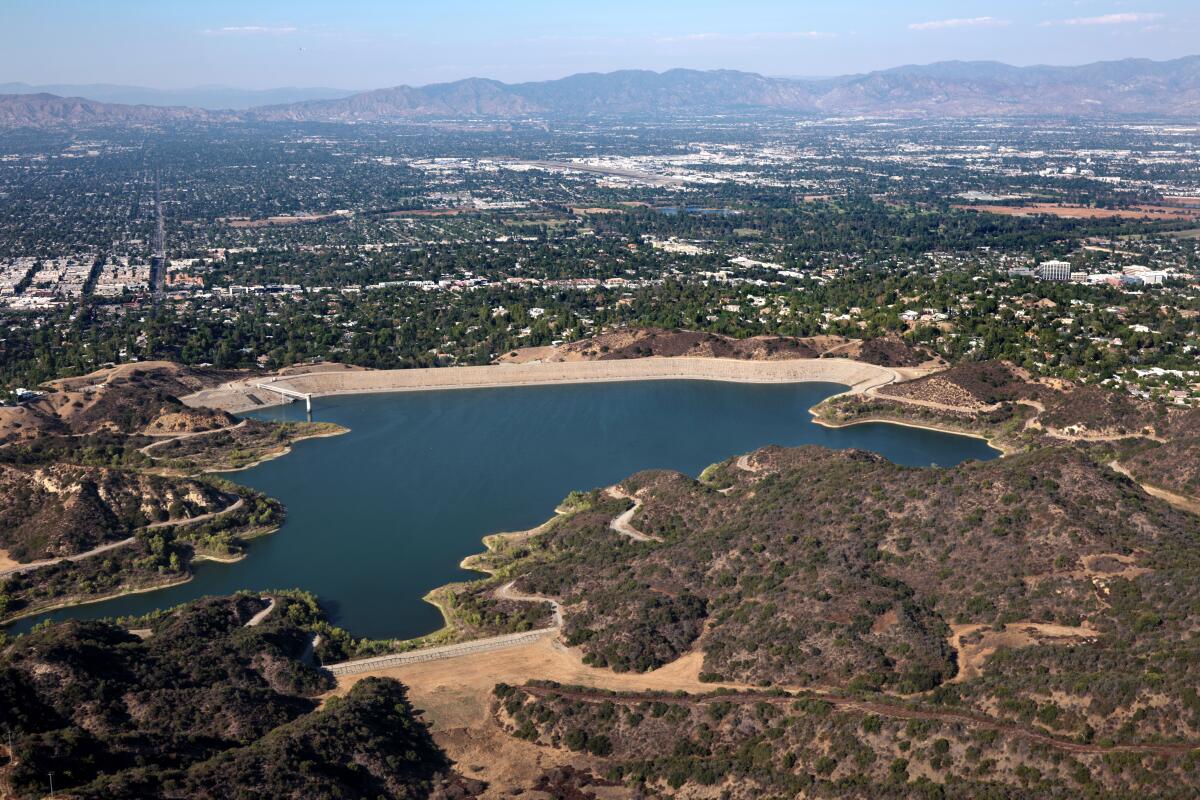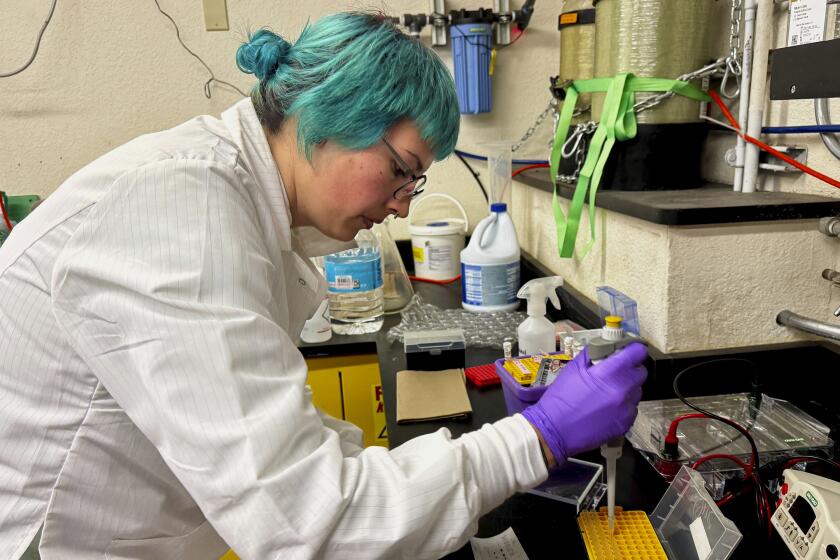Meet the 104-year-old hero helping save homes in Brentwood from Palisades fire

- Share via
- Fire aircraft battling above Brentwood needed a source for water, and they found it very nearby.
- The Encino Reservoir is a local institution with a relatively new mission in disaster response.
Los Angeles watched in awe and terror this weekend as a squadron of aircraft bombed water on the Palisades fire as it marched toward Brentwood and Encino.
Much of the TV coverage focused the astonishing sight of choppers day and night flying over tall columns of flames, depositing their water and flying away as red flames transformed into puffs of white smoke. Bystanders cheered direct hits.
But there is another hero of the epic aerial firefight that doesn’t get much applause: the Encino Reservoir.
Coverage of the fires ravaging Altadena, Malibu, Pacific Palisades and Pasadena, including stories about the devastation, issues firefighters faced and the weather.
For its 104 years, the Encino Reservoir has been a treasured asset to the people of the San Fernando Valley. But this week, it may well help entire communities in the path of the fire.

One reason firefighters can hit the fire so aggressively is because they can collect water just a few miles away from the front lines. The reservoir is tucked into the Encino Hills, within the mandatory evacuation area.
To understand how crucial the reservoir has been, check out this time-lapse mapping of aircraft cycling from Encino to the fire and back.
The reservoir is a landmark in Encino and closely guarded by its community. Residents fought for years over the city of Los Angeles’ plans to supply the area with water from a different source, with officials pointing out that open-air reservoirs are prone to contamination by rain runoff, bird droppings and other contaminants.
Track wildfire origins, perimeters and air pollution with the L.A. Times California wildfires map.
After much debate, the city finally decided to keep the reservoir open and use it for emergencies such as earthquakes, droughts and terror attacks, The Times reported in 2002.
Encino was one of several landmark reservoirs built in the 1920s as part of William Mulholland’s plan to secure and store more water around the growing city (the others include the Stone Canyon and the Hollywood, which firefighters credit with supplying ample water for chopper drops earlier this week when the Sunset fire broke out in Hollywood).
The reservoir does have one dark skeleton. Some blame it for the death in the 1990s of the famed 1,000-year-old Encino Oak Tree. Detractors say it took away the tree’s water supply (but other blame air pollution).
More to Read
Sign up for Essential California
The most important California stories and recommendations in your inbox every morning.
You may occasionally receive promotional content from the Los Angeles Times.













